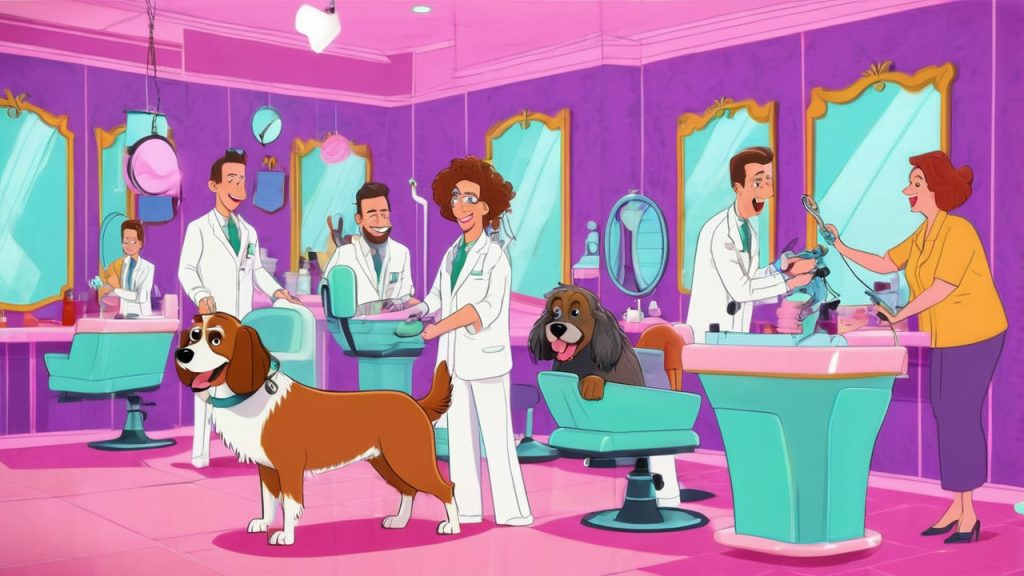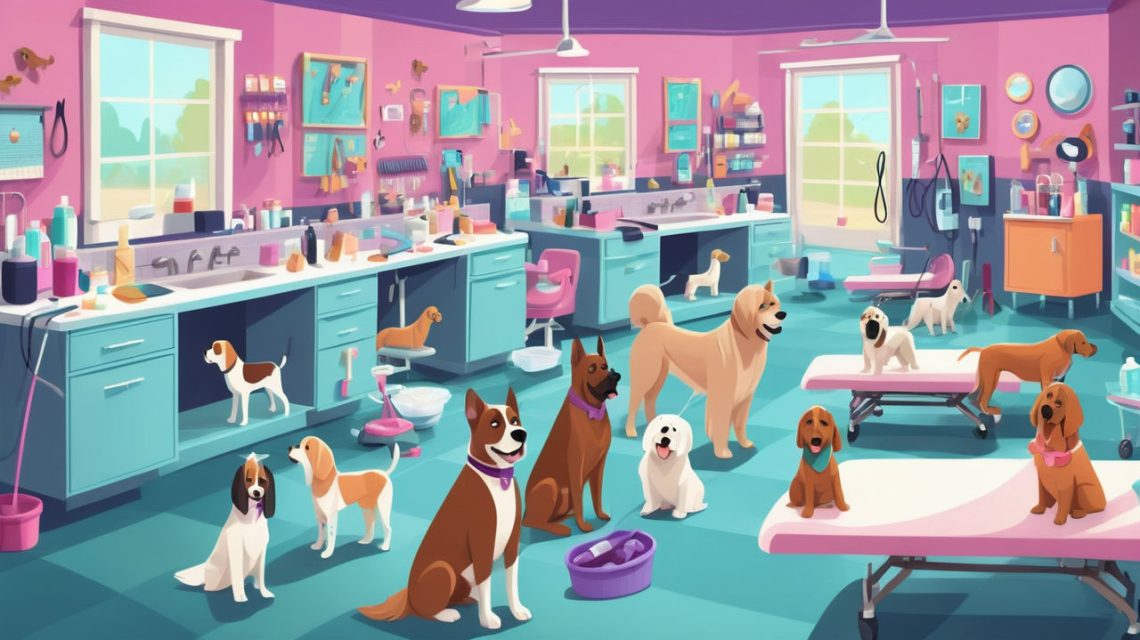All Fur Dogs: Grooming, Care, and Health Tips for Every Breed
When it comes to caring for dogs, one size does not fit all—especially when it comes to their coats. All fur dogs, regardless of breed, require specific grooming and care routines to keep their coats healthy, shiny, and tangle-free. Whether your dog has a thick, fluffy coat or a sleek, short one, maintaining their fur is essential for their overall well-being.
In this article, we’ll explore how to care for different types of dog coats, the best grooming practices for each, and why fur maintenance is critical for your dog’s health. No matter the breed or fur type, these tips will help you keep your furry friend looking and feeling their best.
Why Grooming Matters for All Fur Dogs
Grooming is more than just keeping your dog’s fur looking nice—it’s a vital part of maintaining their health. Regular grooming removes dirt, dead skin, and loose hair, reducing the risk of skin irritations or infections. It also helps prevent matting in long-haired breeds and reduces shedding in short-haired dogs. Plus, grooming allows you to check for parasites, like fleas or ticks, and spot any skin issues early.
1. Coat Health
A healthy coat reflects a healthy dog. Dogs with well-maintained fur are less likely to experience discomfort, itching, or skin conditions. Regular brushing distributes natural oils from the skin, giving their coat a natural shine and keeping the fur moisturized.
2. Bonding Time
Grooming is also a great opportunity to bond with your dog. Most dogs enjoy the attention and care they receive during brushing, and it helps build trust between you and your pet. By making grooming a positive experience, your dog will feel more relaxed and comfortable, making the process easier for both of you.
Different Coat Types and How to Care for Them
Each dog has a unique coat type, and each requires different care routines to keep it in top condition. Understanding your dog’s coat type will help you choose the right grooming tools and frequency.
1. Short Coats
Short-coated dogs, such as Beagles, Labrador Retrievers, and Boxers, have fur that lies close to their bodies and doesn’t require as much grooming as long-haired breeds. However, regular brushing is still important to control shedding and keep the coat smooth.
- How to care for short coats: Use a bristle brush or rubber grooming mitt to remove loose fur and dirt. Brushing once or twice a week is usually sufficient, but during shedding seasons, you may need to brush more frequently.
2. Long Coats
Long-coated breeds like Golden Retrievers, Shih Tzus, and Afghan Hounds require more frequent grooming to prevent tangles and mats. Their fur can easily become knotted if not brushed regularly, leading to discomfort and skin issues.
- How to care for long coats: Use a slicker brush or pin brush to remove tangles and loose hair. Daily brushing is recommended to keep the coat manageable and free of mats. Pay special attention to areas where mats tend to form, such as behind the ears, under the legs, and around the tail.
3. Double Coats
Double-coated breeds, such as Huskies, German Shepherds, and Corgis, have a dense undercoat beneath their top layer of fur. These dogs shed heavily, especially during seasonal changes when they “blow” their coat.
- How to care for double coats: Use an undercoat rake or de-shedding tool to reach the thick undercoat. Brush thoroughly at least once a week, and more often during shedding seasons. Avoid shaving double-coated dogs, as their fur helps regulate body temperature.
4. Curly or Wavy Coats
Breeds like Poodles, Bichon Frises, and Portuguese Water Dogs have curly or wavy coats that don’t shed much, but they do require regular trimming and grooming to prevent mats from forming.
- How to care for curly coats: Use a slicker brush and metal comb to keep curls tangle-free. Curly-coated dogs often need professional grooming every 6 to 8 weeks to keep their coat trimmed and tidy. Be sure to brush regularly between grooming sessions to prevent mats.
5. Wire Coats
Wire-coated dogs, such as Terriers and Schnauzers, have a rough, coarse outer coat with a softer undercoat. These breeds benefit from a grooming technique called hand-stripping, which removes dead hairs and encourages new growth.
- How to care for wire coats: Use a slicker brush or stripping knife to remove dead hair. Brush weekly to keep the coat healthy, and consult a professional groomer for hand-stripping every few months if needed.

Best Grooming Practices for All Fur Dogs
Regardless of coat type, there are some essential grooming steps that apply to all dogs. By following these best practices, you can ensure your dog’s fur stays clean, healthy, and comfortable.
1. Regular Brushing
Brushing your dog’s fur is the foundation of any grooming routine. It removes loose hair, dirt, and debris, while also distributing natural oils for a shiny, healthy coat. Brush your dog regularly based on their coat type—some dogs need daily brushing, while others may only need it weekly.
2. Bathing
How often you bathe your dog depends on their coat type and lifestyle. Dogs with long or thick coats may need baths more frequently, especially if they spend a lot of time outdoors. Use a dog-specific shampoo to avoid irritating their skin. Generally, bathing every 4 to 6 weeks is sufficient for most dogs.
- Tip: Brush your dog before bathing to remove loose fur and prevent mats from tightening when wet.
3. Nail Trimming
Overgrown nails can cause discomfort and even lead to injury. Check your dog’s nails regularly and trim them every 2 to 4 weeks, depending on how fast they grow. Use a dog-specific nail clipper and be cautious not to cut into the quick, which can cause bleeding and pain.
4. Ear Cleaning
Some dogs, particularly those with floppy ears or lots of fur around the ears, are prone to ear infections. Clean your dog’s ears regularly using a vet-approved ear cleaner to remove wax and debris.
- Tip: Avoid inserting anything deep into the ear canal. Stick to cleaning the outer area with a soft cloth or cotton ball.
5. Professional Grooming
For certain breeds, professional grooming is essential to keep their coat in good condition. Dogs with curly or long coats, in particular, benefit from regular grooming appointments to maintain the shape and health of their fur. Professional groomers can also offer services like hand-stripping, ear cleaning, and nail trimming.
How Grooming Affects Your Dog’s Health
Proper grooming is more than cosmetic—it directly impacts your dog’s overall health and well-being. Here are a few ways grooming benefits your dog’s health:
1. Skin Health
Regular grooming helps you spot potential skin issues early, such as rashes, hot spots, or lumps. It also prevents dirt and oils from building up, which can lead to infections.
2. Reduces Shedding
Brushing your dog regularly helps control shedding by removing loose fur before it can spread throughout your home. It also keeps your dog’s coat looking neat and reduces the risk of mats forming.
3. Parasite Detection
When grooming your dog, you’re more likely to notice fleas, ticks, or other parasites. Early detection of these pests can help prevent infestations and protect your dog’s health.
4. Comfort and Mobility
For dogs with long hair or thick undercoats, regular grooming prevents mats and tangles that can pull on the skin and cause discomfort. Grooming also keeps nails trimmed, preventing pain or difficulty walking.
FAQs About Grooming All Fur Dogs
How often should I groom my dog?
- It depends on the breed and coat type. Short-haired dogs may only need brushing once a week, while long-haired or curly-coated dogs might require daily brushing and regular professional grooming.
Can I groom my dog at home, or should I see a professional?
- You can handle basic grooming at home, such as brushing and bathing. However, professional grooming is recommended for certain breeds, especially those with curly, long, or thick coats that need trimming or hand-stripping.
How do I prevent my dog’s fur from matting?
- Regular brushing is key to preventing mats. For long-haired or curly-coated dogs, brush daily and pay attention to areas prone to matting, like behind the ears and under the legs.
What type of brush should I use for my dog’s coat?
- The best brush depends on your dog’s coat type. Use a slicker brush for long or curly coats, a bristle brush for short coats, and an undercoat rake for double-coated breeds.
How often should I bathe my dog?
- Bathing every 4 to 6 weeks is usually sufficient, but active dogs or those with skin issues may need more frequent baths. Always use a dog-specific shampoo to avoid skin irritation.


